Top 25 Albums Of 2013
1 A Feast Of Consequences by Fish
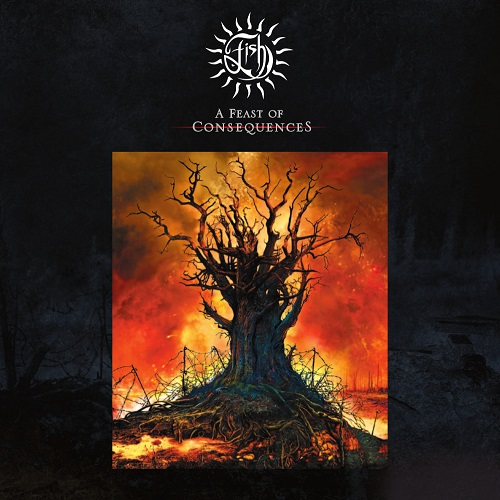
Fish’s previous album, 13th Star, was that most clichéd of things, a “return to form” after a couple of albums where it felt like the big Scot’s heart just wasn’t really in it any more – small wonder, given the turbulence in his personal life and his then ongoing health problems. 13th Star was a hugely emotional purging of all that, and A Feast Of Consequences saw Fish upping his game still further. Some days I think this might be my favourite record he made outside of Marillion: yes, time and wear had tempered his fiery vocal delivery, but his writing proved to be as sharp as ever, and he was no longer trying to sing outside his new lower natural range. The results are stunning: opener Perfume River is the kind of slow-burning epic he would have been at home with delivering when he was in Marillion, and the enjoyably barbed All Loved Up and the thoughtful Blind To The Beautiful showed he had lost none of his knack for addressing wider issues. Conversely, the album ends with two deeply introspective and hugely powerful tracks in the form of The Other Side Of Me and The Great Unravelling. Perhaps the star of the show, though, is the High Wood suite, a series of interlinked songs about the First World War that paint a grim, paranoid and deeply moving picture of the futility of war and the grotesque, hellish things soldiers of both sides did in service of their countries. Flesh-crawlingly immersive and atmospheric, it has to be one of the most incredible pieces of work Fish has ever committed to record. An extraordinary album.
2 Tales Of Us by Goldfrapp
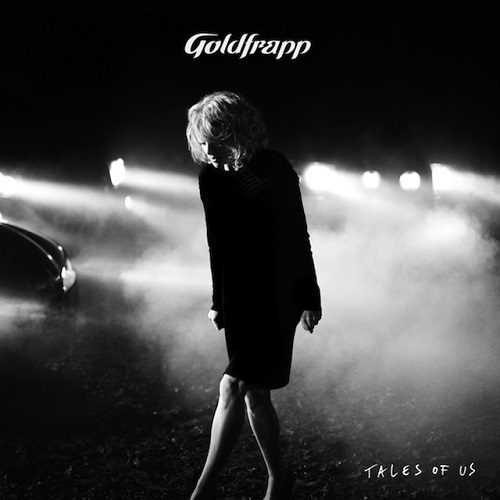
I genuinely thought that perhaps Goldfrapp had peaked with their second album, Black Cherry, only to have to think twice about it when their fourth album, Seventh Tree, was released – something which the enjoyable but relatively uninventive Head First seemed to confirm. How wrong I was. Tales Of Us is, for me, Goldfrapp’s finest hour. Clearly disappointed with Head First themselves, the duo retreated to the studio once more to make the record they really wanted to make. Tales Of Us is a stunningly beautiful record: whilst Alison Goldfrapp could melt me into a puddle by reciting Terms and Conditions fine print, she was in particularly fine voice here, her gorgeous voice providing the focus for a series of songs so intimate that you feel like an intruder listening to them. Will Gregory’s arrangements are sensational: thrilling in their drama and momentum one moment, then restrained and powerfully emotive the next. This is a record that never fails to reduce me to tears pretty much every time I hear it – if I’m not in pieces by the time I get to the gorgeous Clay (unlikely), then that will always, always finish the job. I adore Goldfrapp – and by that I mean both Alison herself and her all-too-often overlooked collaborator Mr Gregory – and all of their records, but if they’d only ever made this one record, they would still have a very special place in my heart. A contender for the most beautiful, heart-stopping album I’ve ever heard.
3 The Raven That Refused To Sing by Steven Wilson
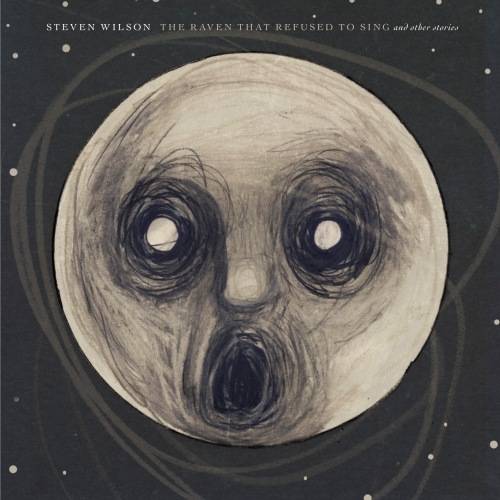
Intended from the beginning as a homage to the classic conceptual albums of the 1970s, Steven Wilson’s third album was in many ways a very obvious throwback: instrumentally, in the very organic way it was recorded, and even in terms of the way the tracks were constructed. The Raven That Refused To Sing (And Other Stories) is a collection of ghost stories with a little social commentary thrown in. Many of the tracks tend towards the longer side (three of the six clock in at over the ten minute mark) and showcase the instrumental dexterity of his assembled band in a way that none of his other albums do. Consequently the record was divisive, in that fans tended to think of it as his best work or his least effective, however much they enjoyed it. Up to this point, for me it was his most satisfying and cohesive record, and the moment when I felt he had finally laid the ghost of Porcupine Tree to rest. Possibly he felt the same, which could be why his subsequent two records had a much more Porcupine Tree-esque feel and sound; that classic collision of the vintage and the cutting-edge that had won him a legion of fans over the years. In a sense, The Raven… is a stylistic anomaly, but it’s a very satisfying one. Wilson has seldom been as baleful as he is on The Holy Drinker, as lyrical as he is on Drive Home, or as beautifully melancholic as he is on the wonderful title track. A record you can really lose yourself in.
4 Hesitation Marks by Nine Inch Nails
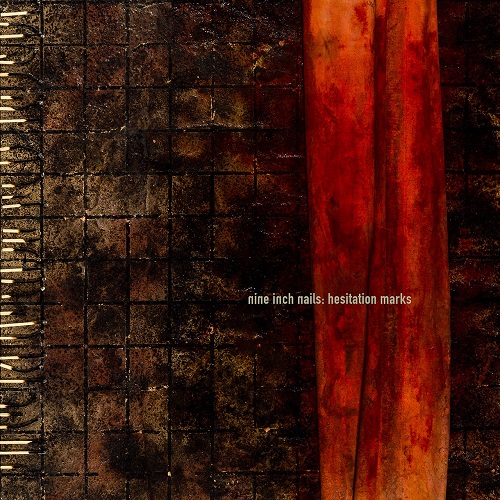
If there’s one thing you can guarantee, it’s that each new Nine Inch Nails record is going to be a fascinating experience. Trent Reznor’s inventive approach to writing and arrangement means that every record has a very clear identity and mood. Here, NIN are at their most electronic and rhythmic, and Reznor’s legendarily dark worldview is leavened by sparks of optimism and genuine hope. That’s not to say that this is a happy record – “Everything is not OK / We lost too much along the way“, as Reznor sings on All Time Low – but after the grim, nihilistic outlook of albums like The Downward Spiral and The Fragile, Hesitation Marks feels like the sun peeping out from behind the storm clouds. As always, Reznor’s empathy for the modern world’s victims and misfits underpins the material, and his righteous anger for all that is unfair and oppressive in the world is fiercely expressed. Tracks like the clattering Copy Of A and the slow-boiling rage of Disappointed showed that Reznor had not lost his edge, yet the ambient swell of Find My Way and the icy metronomic pulse of Satellite were examples of Reznor widening his net and continuing to mutate NINs signature sound. For me, Hesitation Marks was a classic example of a record made by a band who truly followed their own muse and who weren’t afraid of change. Lush, atmospheric, powerful and memorable, this was, for me, NIN’s most complete album since 1999’s The Fragile.
5 The Twenty Seven Club by Magenta
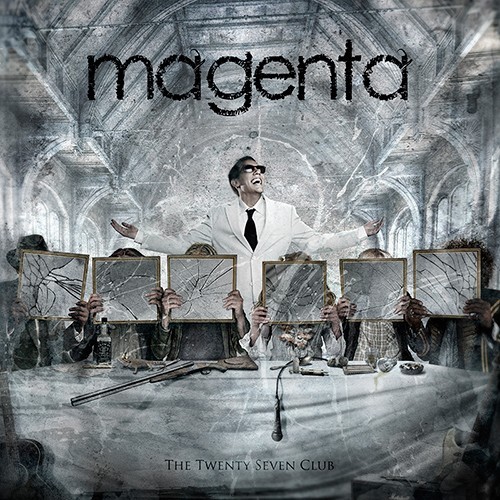
Whilst Magenta’s previous album, Chameleon, had been a welcome change of pace and even revolutionary for the band in its own way, it wasn’t a huge surprise to see the band return to longer tracks and a conceptual album with The Twenty Seven Club. However, the band had clearly carried their newly widened musical palette with them, so the new album was occasionally as dark and powerful as Metamorphosis had been, and was as stylistically diverse as Chameleon had been. The band had simply absorbed these new influences into their sound and made a record that consolidated all of their previous work into a glorious whole.
The album’s title refers to a group of celebrities who found great fame at a young age, but all died at the young age of twenty seven. Over its six tracks, the album examines the lives of Jim Morrison, Jimi Hendrix, Janis Joplin, Brian Jones, Kurt Cobain and Robert Johnson, with each track given a different sonic identity. I’ve got a special fondness for the opening Morrison-themed The Lizard King, as wonderfully euphoric as it is sometimes sobering, and the closing The Devil At The Crossroads, which narrates Johnson’s tragic tale in heart-wrenching style, although it seems churlish to pick out any favourites: the distinctly Floydian balladry of the Janis Joplin-centred Pearl is also stunning, and the remaining tracks are all intricate, atmospheric pieces of work, wonderfully sung and characterised by the reliably brilliant Christina Booth. I’ve got nothing but praise for this band, but this record is particularly involving and emotive.
6 Dream Theater by Dream Theater
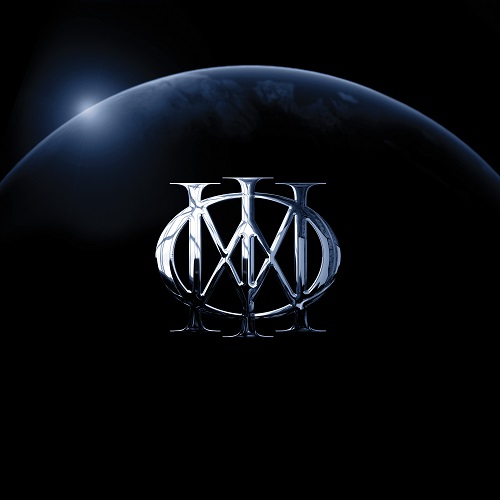
After the stunning A Dramatic Turn Of Events, my expectations for the follow-up were sky-high, which might help to explain why I was initially underwhelmed with this, the band’s twelfth album. After its highly dynamic predecessor, Dream Theater initially seemed a little one-dimensional, but naturally there was a lot more going on beneath the surface (d’you see what I did there?). Regular listening revealed an album that showcased the band’s unique style very strongly – and evidently the band agreed, as that’s why they felt able to give it its eponymous title. The frenetic The Enemy Inside, which examined PTSD (Post-Traumatic Stress Disorder), and the striking Surrender To Reason were very typical Dream Theater offerings, and elsewhere they demonstrated their skill with shorter, punchier rockers (the Rush-influenced The Looking Glass), stripped-back acoustic work (the slow-burning campfire song Along For The Ride) and a lengthy epic (the breathtaking Illumination Theory, which remains one of my favourite long-form Dream Theater tracks). Along the way they slotted in what could be my favourite Dream Theater instrumental track (Enigma Machine) and the emotionally powerful The Bigger Picture, which pretty much did for me when I finally saw them perform it live on the Images & Words anniversary tour a few years later. Another great record in one of modern prog’s strongest discographies; little did we all realize that the band were about to serve up one of their biggest musical curveballs…
7 Shrine Of New Generation Slaves by Riverside
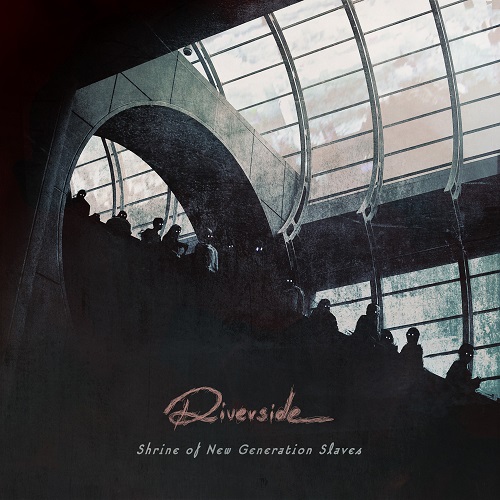
Riverside’s fifth album felt like the beginning of a new chapter for the Polish prog legends. The record’s central concept was of one of modern disillusion, where we are all trapped in unfulfilling jobs, slaves to the 9-to-5 grind with little or no hope of escaping it – we are the new generation slaves, and our shrine is business; our work serving only to make those higher up the corporate ladder wealthy. Mariusz Duda and his band paint a bleak picture of a world where our dreams are crushed under the wheels of capitalism, where the common good is ignored and our dreams of a better life are extinguished, surrendered to the hard practicalities of everyday living. A pretty timely conceit, just a few years after the financial crisis of 2008 that so nearly brought banks across the globe to their knees. In lesser hands, the album might be unremittingly grey and dperessing, but Duda’s potent lyrics and the band’s powerful music provide a wealth of colour and emotion to the record. Songs like the bleak We Got Used To Us, the thrillingly dynamic The Depth Of Self-Delusion and the spine-chillingly immersive Escalator Shrine are some of the band’s best work to date. The band have probably made ‘better’ albums, but I’ve always felt particularly close to this one – because of the subject matter, but also because I find Duda’s treatment of the topic so wonderfully empathetic.
8 Rubidium by Maschine
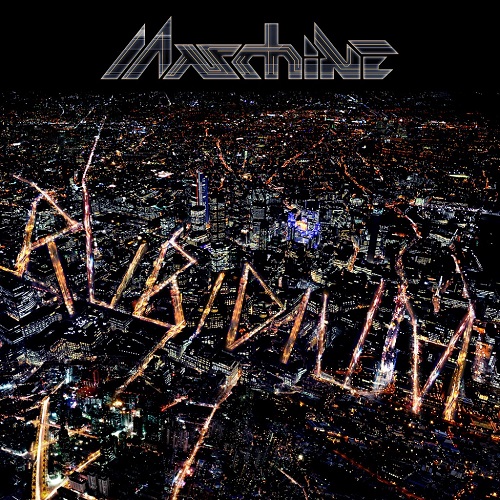
Eyebrows were raised when virtuoso guitarist Luke Machin’s much-lauded band Concrete Lake underwent what felt like a last-minute name change before recording this, their debut record. Clearly nothing was amiss, though, because the result was one of the most thrilling inventive progressive rock albums I’d heard for years at the time of its release. Machin and his band were as technically skilled as the likes of Haken, but whereas Haken were plainly identifiable as progressive metal, Maschine felt less readily categorisable. The album certainly kicks off with a bang, the chunky riffing and relentless rhythms of The Fallen seem to park it firmly under the progressive metal banner – until the last few minutes, where it unfurls into a gloriously chilled coda, where blissful piano trades licks with Machin in relaxed, almost Steve Hillage-like mode. The surprises keep coming, too: Cubixstro flirts with Latin rhythms before dissolving into spacey dub, whilst Invincible is a gentle, pastoral piece with folk influences. Around these showcases for the different faces of the band, the title track switches rapidly between atmospherics and high-powered Dream Theater-style pyrotechnics, whilst the epic two-part Eyes delivers one eye-popping set piece after another. Rubidium is a fearless record that merges and meshes disparate styles with ease and grace, and effortlessly combines staggering virtuosity with fluid melodicism and great ambition.
9 13 by Black Sabbath
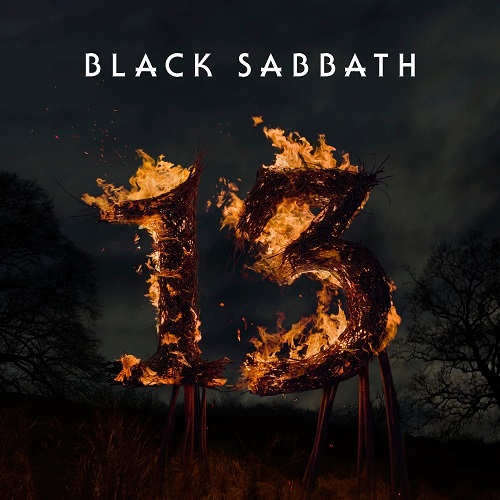
In all honesty, it had been quite a while since Sabbath had turned in an album I loved. Their last studio album, the thoroughly wretched Forbidden, was the band’s recorded nadir for me, and whilst the albums that immediately preceded it weren’t nearly as bad, none of them had been classics; the last time I was genuinely enthused about ‘the great new Sabbath album’ was with 1993’s Ronnie James Dio-assisted Dehumanizer. So it was with mixed feelings that I awaited the arrival of the band’s new album, their first full album of new studio work with Ozzy Osbourne since 1978’s Never Say Die. Mixed feelings exacerbated when I discovered original Sabbath drummer Bill Ward was not to be involved.
However, when the album arrived, I have to admit I was taken aback at just how authentic and exciting it was. Granted, the absence of Ward was a real blow, and whilst Rage Against The Machine‘s Brad Wilk did a fine job on the album, he was no Bill Ward. Granted also that the album featured many direct lifts from and homages to earlier material, the Planet Caravan-aping Zeitgeist possibly the most blatant of them. But for all that, 13 is a superb Sabbath album, and an almost perfect curtain closer for a band who had done so much to define heavy metal, and who had survived everything that life, and an initially hostile press, had thrown at them. Tracks like End Of The Beginning, God Is Dead? and Age Of Reason stack up very favourably against the band’s classic output, and there was something fitting about the fact that Ozzy was there at the end. A great triumph against all the odds.
10 Brief Nocturnes & Dreamless Sleep by Spock’s Beard
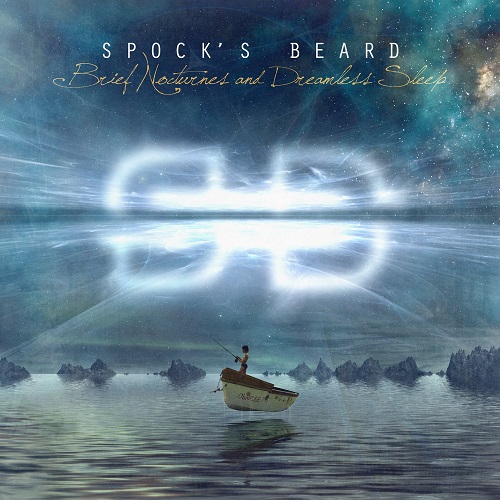
Just as it seemed California’s Spock’s Beard were finally getting over the loss of founding member and chief songwriter Neal Morse, drummer/vocalist Nick D’Virgilio announced his departure from the band in the wake of the tour to support the band’s previous album, the snappily titled X. It’s not hard to imagine that D’Virgilio’s resignation must have led to some serious discussions at Spock’s Beard HQ, but the band were determined to press on. Writing sessions with Neal Morse and the recruitment of Enchant‘s Ted leonard to fill the vocalist position both paid off in spades, and the result is fairly comfortably the band’s most consistent and enjoyable album since 2000’s V. The band’s usual immaculate vocal harmonies and madcap sense of humour were both well in evidence, and there was a sense of a band reinvigorated. Tense rocker I Know Your Secret hinted at a new, slightly darker direction, whilst the bonkers Afterthoughts and the utterly joyous Waiting For Me played to the gallery, to tremendous effect. The sound of a band rediscovering themselves.
11 The Devil Put Dinosaurs Here by Alice In Chains
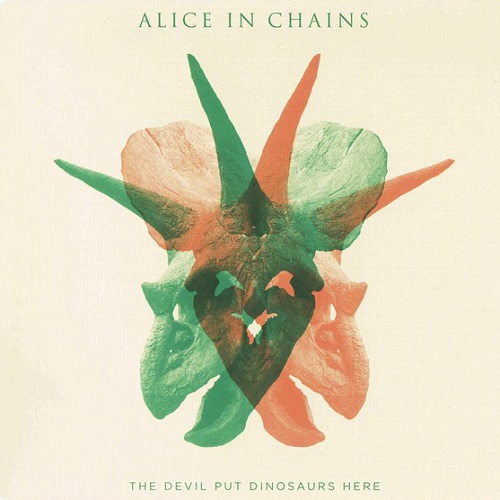
No-one – possibly even the band themselves – could have predicted the rapturous reception given to their previous album, Black Gives Way To Blue – their first without original vocalist Layne Staley, who succumbed to his addictions some years earlier. This follow up is tougher-sounding and, if anything, even more baleful than its predecessor. The grinding riffs that form the basis of songs like Hollow, Stone, the title track and Phantom Limb are some of the most powerful the band had ever conjured, putting paid to any notion that the legendarily intense band had diluted their sound in returning to active duty. It’s a long album – a track or two too long, some have said – and it’s a testament to the band’s singular vision that it never outstays its welcome or loses focus. Brooding, dark, and heavier than a ocean liner’s anchor, this is one of the band’s finest records.
12 The Mountain by Haken
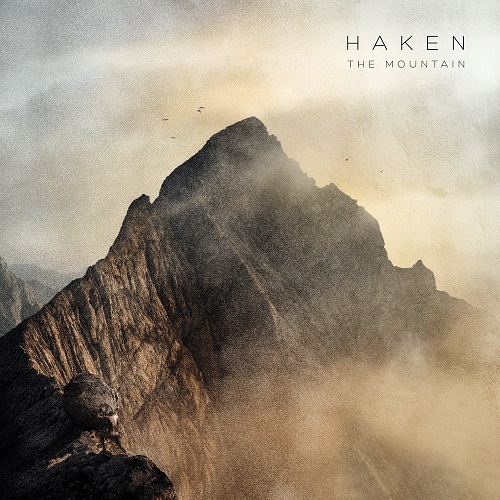
After falling very hard indeed for Haken’s first two albums, I was initially rather underwhelmed with The Mountain. Typically, all it took to change my mind was a little time. Whilst the first two albums were really quite similar, conceptual content aside, The Mountain started colouring outside the lines. It lacks the strong conceptual thread of the first two records, but compensates with unexpected flights of fancy, and some intriguing experiments with the band’s style that really pay off. The shorter songs were leaner and more focused, whilst longer tracks like the dazzling The Cockroach King and the epic Falling Back To Earth were more unpredictable and ambitious. In short, it was another step forward for the band, one that gave them the confidence to spread their wings still further later.
13 Sleeping Pills & Lullabies by Luna Rossa
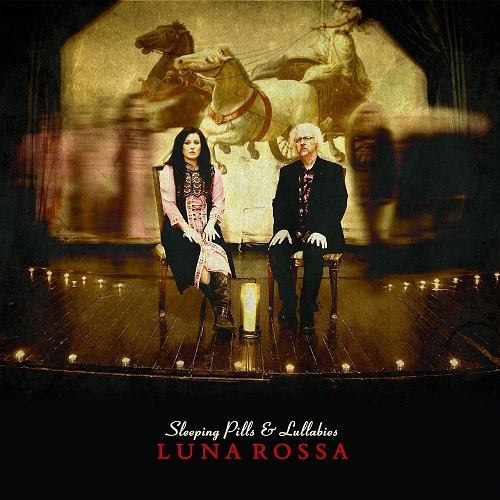
The first album by Luna Rossa, a side project of Panic Room‘s Jonathan Edwards and Anne-Marie Helder, proved to be a real delight – I won’t say “unexpected”, because, well, I fully expected it to be excellent. This is slightly atypical of me, though, since I generally tend not to be too fond of acoustic records: naturally there are exceptions, but generally speaking I like the bluster of an amped-up live band and often find acoustic records samey or simply poor cousins of their electrified relatives. Edwards and Helder know just how to press my buttons, though, and Luna Rossa’s debut is a thoughtful, emotive treat. Running the gamut of moods – from the sweetly mysterious The Dark Room to the effervescent Mad About You, and the blissful calm of Cloud to the powerfully hopeful Rise Up, Sleeping Pills & Lullabies is a wonderful counterpoint to the duo’s work in Panic Room.
14 Dimensionaut by Sound Of Contact
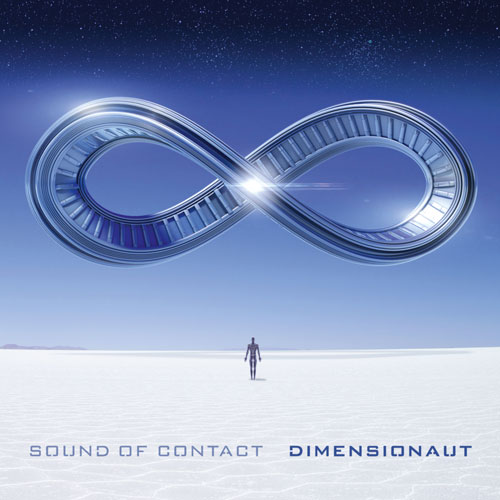
It’s hard to imagine the pressure that the sons and daughters of rock stars must be under to replicate their parents achievements. Simon Collins, son of legendary drummer and vocalist Phil Collins, didn’t seem to let such expectations trouble him unduly. Joining forces with a formidable band (featuring future prog luminary Dave Kerzner on keys, and the twin guitars of Matt Dorsey and Kelly Nordstrom), the newly-formed Sound of Contact conjured a stunning debut in Dimensionaut. A winning mixture of no holds-barred progressive rock and stadium-friendly rock, the album is chock full of big choruses, hummable melodies and memorable set-pieces that Collins Jnr. fronts with irresistible charisma. Tricksy prog like the instrumental Cosmic Distance Ladder and the epic Mobius Strip sit comfortably next to potential anthems like Pale Blue Dot and the instantly addictive Only Breathing Out, and the whole 73-minute album seems to zap past in a blur of highlights. The band have fractured and re-formed since this album was released; hopefully one day they’ll get around to making the long-awaited follow-up.
15 If You Wait by London Grammar
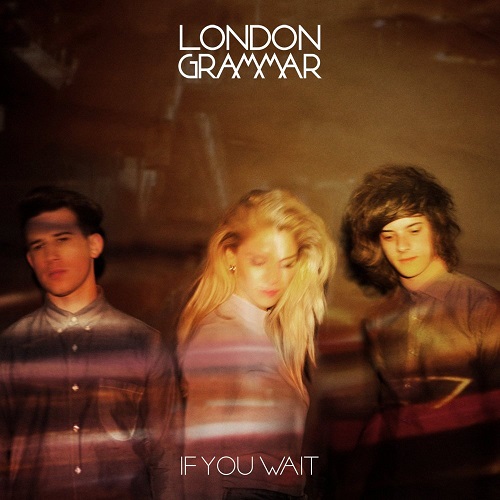
This album came to my attention in time-honoured fashion: I walked into a local record store that was playing it over the in-store speakers and it stopped me dead in my tracks. It was subtle enough that I had barely noticed it when I had walked in, but after about 10 minutes I was transfixed. Eventually the chap behind the till took pity on me and said, “Good, isn’t it? It’s the London Grammar record”, and flourished it at me. I proceeded at warp speed to the till and spirited it away for further listening.
It’s such a simple record at heart; for the most part, it consists of slow-motion, sodium-lit urban balladry. It’s just executed so heart-stoppingly well. The songs are carefully honed, not an ounce of flab on them, almost every one of them potentially a classic. But much as I hate to single out a musician on an album this good, especially one that was plainly such a team effort, the real magic here is courtesy of vocalist Hannah Reid, who possesses the sort of voice that could charm the stars down out of the skies. What she lacks in versatility – she definitely has a particular style – she amply compensates for with her effortlessly emotive voice, a voice that sounds like your own heart is singing to you. On songs like Hey Now, Flickers and the devastatingly beautiful Strong – a song that can still reduce me to tears within a minute of starting – Reid is simply untouchable. The soundtrack of urban isolation and loneliness and, simultaneously, of great hope, determination and empathy, this is an absolutely stunning album.
16 The Circle And The Blue Door by Purson
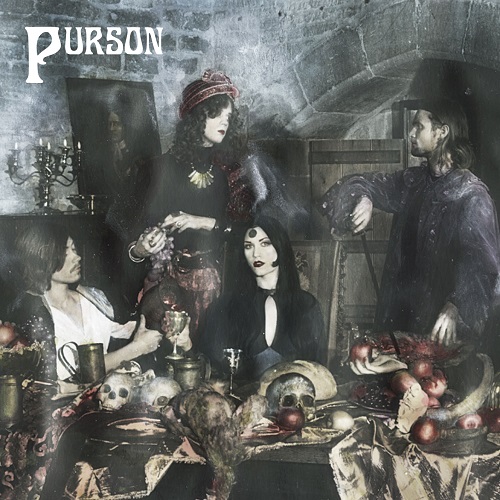
The Circle And The Blue Door was one of those debut albums that I knew I’d adore before I heard it. Purson’s first couple of singles had already captured my attention, and the album proved that the band could spread their haunted house psychedelia just as effectively over the course of a full album. Vocalist and chief songwriter Rosalie Cunningham conjured catchy riffs and eerie carousel melodies with casual ease, and the band converted them into fuzzy, psychedelic rock anthems that lodged themselves into my cerebellum and stubbornly refused to leave. Purson somehow managed to be thoroughly modern and utterly retro all at once, their 70s-style stage garb and the glam-rock stomp of tracks like Leaning On A Bear and the spooky Sapphire Ward seeming like throwbacks yet possessing a sophistication that the bands who inspired them seldom achieved. Like Roy Batty, Purson were to burn so very brightly that they couldn’t last, but at this stage it was already looking like the world was their oyster, as a string of high-profile support slots seemed to indicate.
17 Oceans Of Time by Touchstone
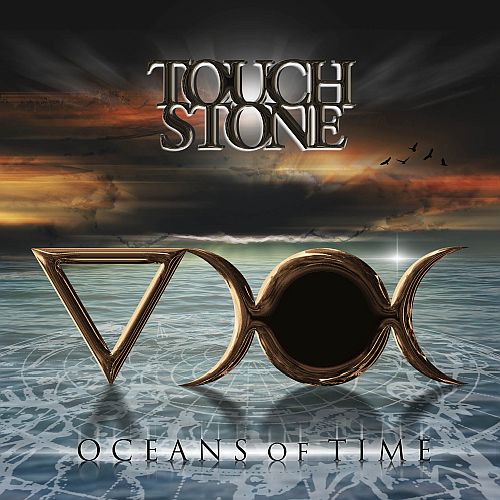
Touchstone were on the ropes by the time they followed up the excellent The City Sleeps with this, their fourth full-length record. With keyboardist and co-lead vocalist Rob Cottingham taking a back seat for various reasons, and vocalist Kim Seviour experiencing health problems, it was left to guitarist Adam Hodgson and bassist Paul Moorghen to keep the aspidistra flying. Happily, they did a fantastic job. Whilst the album does suffer from a distinct lack of input from Cottingham, it still serves up a few Touchstone classics: the somewhat atypical title track, the spirited Fragments and the disquietening Contact are all gems, and the fiery Through The Night is a classic example of the way the band blended feel-good anthemic rock with atmospheric prog stylings. Less one-paced than its predecessor, it’s a stronger offering overall, despite Cottingham’s reduced role – only the ill-advised revisitation of previous highlight Solace (first seen on 2009’s Wintercoast), which swaps the original’s thoughtful emotion with rock bluster and a hammy guitar showcase, lets the side down. Sadly, this was the beginning of the end, with both Cottingham and Seviour handing in their resignations shortly afterwards, but the band’s magical touch is still at high tide here.
18 The Wisdom Of Crowds by Bruce Soord & Jonas Renske
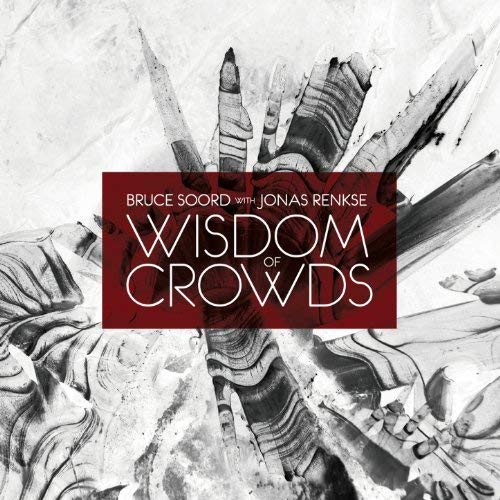
The prospect of two of the masters of melancholy working together was an enticing one, and this collaboration between The Pineapple Thief‘s Bruce Soord and Katatonia‘s Jonas Renske certainly delivered. The album is not as depressive as might be imagined, though both writers certainly aren’t shy when it comes to talking about isolation and being mistreated by their peers. Wisdom Of Crowds is often as chilly and forbidding as its sleeve, yet – as always, with both Soord and Renske – there’s such a strong sense of empathy and understanding at play throughout that the album ultimately feels like a giant comfort blanket. However misunderstood and isolated you feel, Soord & Renske have got your back. This is one for the long winter nights; turn down the lights, look up at the cold, unblinking stars, listen and be reassured. There’s no sign that there might be another Soord & Renske record, but I’ll be first in the queue if there is.
19 Welcome Oblivion by How To Destroy Angels
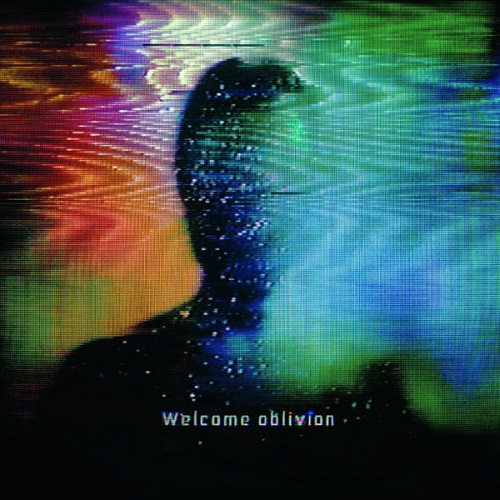
Leave it to Trent Reznor to be involved in not one, but two killer albums in the space of the same year. How To Destroy Angels was formulated as a vehicle for Trent’s writing with his wife, Mariqueen Maandig, and collaborator Atticus Ross (who was to go on to join Reznor in Nine Inch Nails). Whilst Reznor’s influence means that the project bears some similarities to Nine Inch Nails, overall the music is more electronic and processed, and Maandig handles the vast majority of the vocals, which helps set it apart. It is perhaps sort of an alternate universe version of Nine Inch Nails, bearing strengths that are the same as those of its mothership, and others that are very much its own. If anything, darker and icier than Nine Inch Nails’ Hesitation Marks, and less reliant on conventional song structure, it’s a decidedly intense listen – tracks like And The Sky Began To Scream, Ice Age and We Fade Away are as blackly nihilistic as anything Nine Inch Nails had ever written. It’s not hard to detect the influence this record had on Hesitation Marks and subsequent Nine Inch Nails records, though, and for my part, I’d love to hear another How To Destroy Angels record. Here’s hoping Maandig can talk Reznor into it (or vice versa).
20 Perils Of The Deep Blue by Sirenia
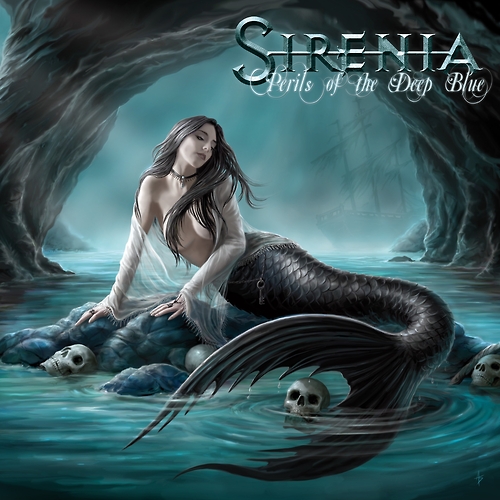
At least until it’s successor – the everything-including-the-kitchen-sink madness of the superb The Seventh Life Path – Perils Of The Deep Blue was Sirenia’s most ambitious record. The material marks a sharp left turn from the more mainstream, pop-influenced material that Sirenia mainman Morten Veland had been writing with vocalist Ailyn. For this album, he dialled up the progressive elements and the razor-sharp riffing, and Ailyn took herself back to vocal training to achieve the ghostly tones and extended range required for the more overtly gothic flourishes of the new songs. The result is a no-holds barred record that sees Sirenia at their darkest and most bleak. It’s a sensational piece of work, not least for its self-assurance and unpredictable twists and turns. Even the song picked out for lead single status, Seven Widows Weep, is seven minutes long and so loaded with detail that it’s a dizzying listen. The album reaches its apotheosis with the epic Stille Kom Døden, which comes perhaps closest of all to Veland’s self-confessed ideal of sounding like a metallic Sisters Of Mercy, it’s orchestral bombast tied to crushing riffs like a kitten tied to a boulder. Lengthy, difficult, yet astounding in its fastidious detail and relentless dark energy, this is Sirenia in their purest form. Which is probably why it might still be my favourite of their albums.
21 Phoenix Rising by System 7 & Rovo
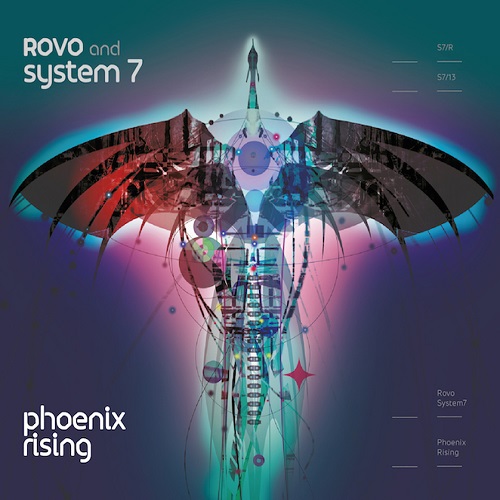
A collaboration between Japanese art rockers Rovo and Steve Hillage & Miquette Giraudy’s melodic techno project, System 7, Phoenix Rising is a thrillingly euphoric listen. System 7’s sinuous beats seamlessly connect to the tireless velocity of Rovo, so much so that you can barely see the seams – this isn’t two bands playing together, it is one brand new one. Rovo’s virtuoso playing is matched by System 7’s effortless melodicism; and the topping on this already gorgeous cake is provided by Hillage dusting off his guitar and launching into a series of jaw-dropping performances that prove that the Glissando God has still got it, in spades. Positively essential for Hillage-heads, this wonderful record also provides an ideal gateway for new listeners to discover two great bands. Tremendous fun – definitely a ‘big grin’ record, if ever there was one.
22 Inform, Educate, Entertain by Public Service Broadcasting
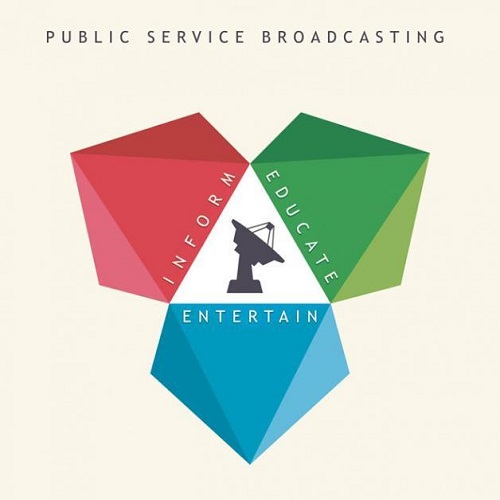
Public Service Broadcasting’s first album sets out the template for their future work very successfully: marrying instrumental indie-flavoured progressive rock with sampled historical soundbites. Nothing particularly original in that, you might think, and you’d be right – and yet in their hands it works incredibly well. For the most part, I’m sure this is down to their chosen subject matter, which highlights any number of human and technological achievements – the result is music which manages to be nostalgic, optimistic, celebratory and forward-looking all at the same time. Inform, Educate, Entertain is the sort of record you can play on a bleak winter’s day and be certain that it will lift your spirits. Whether they’re celebrating the legendary British aeroplane, the Spitfire, or man’s conquest of Mt. Everest, or even something as seemingly mundane as the delivery of the night mail, Public Service Broadcasting will make you smile and feel like the human race isn’t just a virus with shoes. Something increasingly valuable these days.
23 Tomorrow’s Harvest by Boards Of Canada
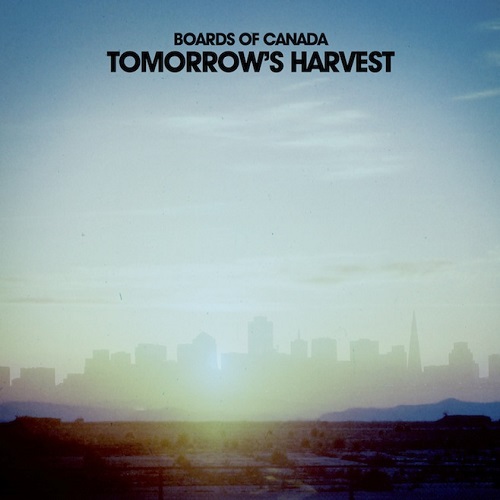
Scottish duo Boards Of Canada make the most blissful and atmospheric electronica imaginable, and Tomorrow’s Harvest might just be one of their best. To play this record is to spend an hour floating in space, or hovering over slowly unfolding alien landscapes: it’s mesmerising in its subtlety and intensely atmospheric, it’s somewhat melancholy feel a commentary on where we are headed as a race (is that a spectacular sunrise or the flash of a nuclear explosion on the album cover?). Sounding thoroughly modern and yet pleasingly tactile and analogue, this is one of my favourite albums of pure electronica in recent years, filled with big ideas but never sacrificing its carefully cultivated mood in an attempt to guide the listeners to them. Like the duo’s previous records The Campfire Headphase, Geogaddi and Music Has The Right To Children, this record has accompanied many a late night coding or writing session. Those records have tended towards the warm and celestial, whilst this is a bleaker record filled with foreboding, but none the worse for it.
24 Of Kings & Angels by Mediaeval Baebes
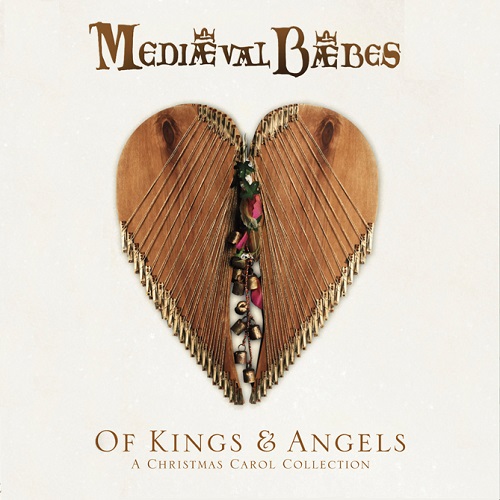
I suspect no-one reading this imagined for one moment that a Christmas/seasonal album would make the top 25 list for any of the years on my slowly snowballing list, and yet here we are. The Baebes’ history of rich vocal performances and wondrous harmony serves them well when it comes to delivering a seasonal record refreshingly free of schmaltz and gimmicks. Whilst the track listing is familiar, including standards like We Three Kings, The Holly And The Ivy, Good King Wenceslas, Gaudete, Silent Night, and so on, what makes this record such a joy is the delivery. The arrangements are strikingly sparse, giving the Baebes vocals the space and air they deserve; the results are stunning. The vocal harmonies are suitably divine, the solo spots spine-tinglingly beautiful, and the material really shows off vocalists and instrumentalists alike to their best advantage. The crass commercialism of the modern-day Christmas is absent, replaced with an album as clear and crisp as a fresh snowfall and possessed of a hushed, peaceful allure that is truly bewitching.
25 Mesolow by Rocket Moth
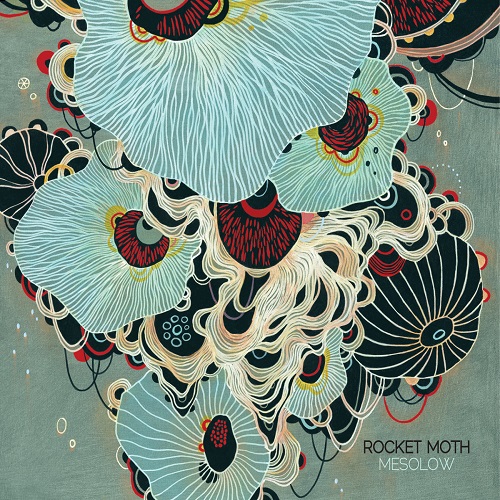
Whilst The Wishing Tree, Steve Rothery’s collaboration with vocalist Hannah Stobart, are essentially on semi-permanent hiatus, thankfully the talented Stobart has found other musical outlets. 2013 found her busy: not just with an unexpected but delightful cameo on the Sound Of Contact album Dimensionaut (see above), but with this, the debut album from her new project Rocket Moth – essentially a duo of Stobart and husband and multi-instrumentalist Paul Craddick. Mesolow showcases Stobart’s versatility in a way that perhaps The Wishing Tree didn’t, aided and abetted by Craddick’s deft and sympathetic playing. Together the duo tackle everything from gentle acoustic pieces to prog, folk, pop and satisfyingly crunchy rock with great assurance. Especially memorable are the Eastern influenced progressive rock grooves of Qismah, and the Fleetwood Mac-styled Silver Lines, both of which showcase Craddick’s instrumental flexibility and Stobart’s effortlessly emotive voice. This album was an unexpected delight: one can only hope that there’ll be more where this came from.
